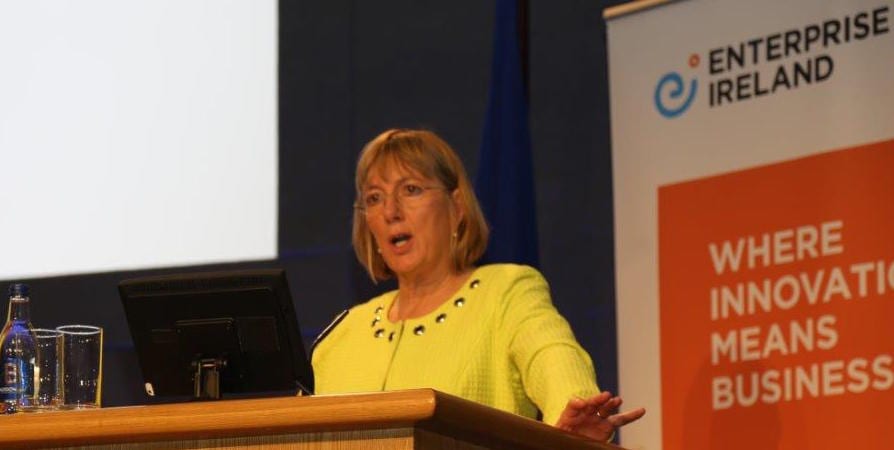
A government initiative to increase Irish competitiveness
RESEARCH – This insightful paper explains how the Irish government is encouraging organizations to adopt lean thinking to improve their competitiveness with the Lean Business Offer.
Words: Richard Keegan, Manager Competitiveness Department, Enterprise Ireland, adjunct assistant Professor, Trinity Business School
Pictured: Julie Sinnamon, CEO, Enterprise Ireland
As a small island nation, Ireland has over time organized itself to be export-led and become one of the world’s leading export economies per capita. This “open” business model is generally seen as a good thing for our country, but it also means that we are very sensitive to negative changes in the global economy.
How badly external factors affect us became painfully clear during the 2008-2013 economic downturn, in response to which the government stepped in (through Enterprise Ireland, the body charged with the support and development of indigenous businesses) to help Irish manufacturers, software companies and service providers to increase their competitiveness.
Upon identifying the beginning of the downturn, EI’s then CEO decided that the State would be able to help our customers (which include a vast range of businesses, from innovative startups to large industrial companies) “weather the storm” if only we could scale up our existing competitiveness offer.
At the time, Enterprise Ireland’s offer, which became known as the Lean Business Offer (LBO), was delivered in a cluster format to a group of 30 companies at a time. This approach was based on my experience during the action research phase for my PhD. It soon became clear that in order to impact on large numbers of companies across Ireland and in many different sectors, we’d have to move away from the approach centered on me and my team (most notably my colleague for many years, Mike Nolan) and address the question of scaling up.
This article, which is based on what I have learned over the past 20 years, looks at the issue of scaling up a government-led initiative to help to increase the competitiveness of more and more Irish companies.
THE LBO IN DETAIL
One of the most notable features of change programs is that many of them fail (as Kotter says in his 2007 book Leading Change: Why Transformation Efforts Fail).
The Lean Business Offer was designed to try to address many of the factors that usually lead these initiatives to failure or reduced success. The thinking behind the LBO is also guided by the work of Prof Chris Voss (of London Business School), who found that good practice drives good performance and identified the important role that government agencies can play in driving performance improvement, particularly in SMEs. (Check out The Four Country Study, Voss, Hanson et all, 1994).
The LBO was formulated to drive the adoption of improved practice by Enterprise Ireland clients. It was also designed to meet the very wide spectrum of needs our clients have (each company is experiencing different issues and is at a different maturity level).
The first key point of note is that the Offer is a “business” and not a “manufacturing” offer.
From the outset it was meant to help companies improve their performance and competitiveness across all areas of the business using lean principles. I felt that if an improvement effort was to be successful and to have broad appeal that it was important that the focus was not just on the manufacturing floor but right across the business.
The second key point of the LBO is that it is based on the principles of lean, but has the flexibility to absorb key elements of other change initiatives.
These include Six Sigma, Total Quality Management, Total Productive Maintenance and Management, Business Process Re-Engineering. (More on this on Applied Benchmarking for Competitiveness, which I co-wrote with Prof Eddie O’Kelly in 2004.)
In other words the Enterprise Ireland Lean Business Offer uses lean principles as a guide and not as a dogma. In a way, the offer might be regarded as not being “pure lean,” but, if we look at lean it is surely an amalgam of good thinking aimed at producing good products, so I have taken the liberty of building on that “non-pure” but highly effective approach.
The third key point of the LBO is that the services offered to clients are offered at three distinct levels of intensity:
- Lean Start – 7-day interaction, over 1-2 months;
- Lean Plus – 3-6 months of activity;
- Lean Transform – Over 2 years of activity.
The offer is explained graphically as a “Spiral of Improvement” as opposed to the more traditional way of illustrating continuous improvement, PDCA cycles. The spiral represents progress, upwards and outwards, as companies develop the capability and capacity of their people and processes. The tools and techniques “used” by companies change and develop as companies move “up” the spiral, as represented in Fig 1.

As they gain understanding and capability, organizations gain the ability to take on and understand more.
The fourth key point of the LBO is that the program is delivered by a cohort of lean consultants, of both national and international standing. These consultants are made available to EI client companies through a publicly available directory.
The fifth key element of the LBO is that Enterprise Ireland manages the directory. Consultants have to show us that they have experience and expertise with lean implementations before they are accepted on to the directory.
We also convene Spring and Autumn Fora where the progress of the program is discussed with the consultants and where issues and opportunities are considered. These Fora also give us the opportunity to engage with the consultants and to help them develop their own capabilities by engaging and sharing with each other. We have seen growth among the consultants in terms of numbers and capability. This approach to bringing the consultant cohort together has helped me address one of the major questions that existed at the start of the LBO roll-out – would there be enough capable consultants to service the needs of our clients? We can say that we have successfully answered that question.
THE LBO METHOD
Enterprise Ireland client companies work with their designated EI client relationship staff member to identify their suitability for the LBO and at what level (Lean Start, Lean Plus or Lean Transform). Clients are then encouraged to interview and select a suitable consultant from the directory. For the Lean Transform cases a multi skilled core team from EI typically engage with the leadership team in the client company to achieve a consensus on the scope and the focus of their proposed activity, before they interview and select their consultants. It is believe that this scoping and consensus before consultant engagement helps ensure that the topics and areas chosen for improvement activities are the central issues and challenges for the business.
The Irish State assists the client companies financially on their lean journeys, through the LBO, and receives impact reports on their efforts and results.
THE RESULTS
The LBO was launched as a Pilot in 2009 and roll-out started in 2010. To date, over 770 lean projects have been supported across all established client sectors (startup companies are not supported under the program as they have bespoke funding mechanisms).
Sectors that traditionally embrace lean, such as engineering, have heavily engaged with LBO, as has the food sector. Many of the country’s leading food companies have engaged with LBO very positively. The service and software sectors have been slower to engage, but early adopters have taken on the concept and achieved significant results. These companies led us to produce Becoming a Lean Service Business, available through Oak Tree Press. More of the middle group of service and software companies are now adopting lean as a way of improving performance.
Our initial internal management analysis of some data from concluded projects has indicated that the simple savings achieved from the Lean Start projects are of the order of an average of €45,000, from the Lean Plus projects of the order on average of €130,000 and from the Lean Transform projects in the order of hundreds of thousands to millions of euro. The results for Lean Start and Lean Plus are presented in Fig 2.

One of the basic premises of encouraging companies to adopt lean principles was the belief that it would drive their competitiveness, which we saw as a leading indicator. It was believed that the lagging indicator would be an increase in employment as the more competitive companies would be able to sell more and would need more staff to service their customers. Our early analysis leads us to believe that this is in fact the case, see Fig 3, where many companies involved in the Lean Transform projects have increased their employee numbers.

Our Government Department of Enterprise Jobs and Innovation commissioned an interim review of the lean program. The results of the impacts of the programme are very positive and interesting. The most significant ones are probably that companies adopting the Enterprise Ireland LBO recorded productivity improvements of 20% and even more positively employment increases of 11%, showing that they had increased competitiveness and sales, too. The independent analysis used counterfactual econometric analysis to identify the specific impacts of the Lean Business Offer on the client companies.
At a National level, Ireland has identified the need for operational excellence as a key element for our national recovery and future development. Forfas, the national strategy body, identified the need for widespread adoption of lean in 2013, and has developed the concept of a National Step Change in manufacturing performance. This Step Change has been included in the three essential reforms in the Irish Government's Action Plan for Jobs, next to Innovation and Internationalisation.
WHAT WE LEARNED
This article is not written as a definitive document on lean activities in Ireland, as our efforts are continuing and evolving. However, a number of lessons have been learned from our experience to date:
- The need for a client centric approach. Clients are at different stages in their evolution and have different needs, wants, experiences and histories. Any effort to help them address their competitiveness issues needs to be aligned to meet their needs, now, and as they evolve.
- The need to provide a "support" structure for companies over time. This longitudinal support and external challenge helps management and staff to move from initial enthusiasm for lean to a systemic change process where continuous improvement becomes the norm.
- The need for resources. The development and roll out of a National or regional program require significant resources. A 1994 European Commission paper on competitiveness and growth identified SMEs as most needing support and also as most likely not to seek it. A subsequent study, carried out across five member states in which Enterprise Ireland participated, was designed to identify why this was the case. The key findings of this research can be summarized as follows: a) SMEs didn't/couldn't know who is a good or a bad consultant; b) SMEs didn't want to be "sold old rope" or the consultant's favorite solution. They wanted their real issues to be addressed; c)SMEs wanted "local" support, typically within an 80 km radius.
- The development of the Lean Service Providers Directory was designed to address points 1 and 3 above. The production of "Becoming Lean/ Applied Benchmarking for Competitiveness/ Becoming a Lean Service Business and the development of the National Guide to Lean were efforts to address point 2, by developing a coherent understanding of what the lean process is, for all people involved in the improvement process, i.e., for shop floor personnel, management, consultants, academics and state agencies.
- People like to hear success stories from their peers. They like to meet staff from other companies who have made progress with lean. They like to hear from similar sized companies as well as from global leaders who have been involved with the methodology for many years. Enterprise Ireland has organized and supported many Best Practice sharing events and site visits (both local and international), and has also published a number of case studies and presentations made by companies on the lean journey. In May 2015, 430 people attended the Dublin Lean Summit, the fifth event in the biennial series, co-organized with the EU Japan Centre for Industrial Co-Operation.
- The need for a base structure of a cohort of people who accept the challenge to try to support companies, day after day, who want to develop. This base structure can be as small as 1-5 people.
- The need for energy to drive the process. Someone needs to take ownership of the process and make it all happen.
MORE RESEARCH NEEDED
It is clear that this paper is presented at an early stage in the roll-out of the Lean Business Offer in Ireland and at a very early stage in the academic research of the impact of the program.
Clear, focused academic analysis of the program is required to study the method and the impacts of the program. I believe that the insights to be gained from this research have the potential to be of ignificant interest to regions and countries that are challenged by the need to improve the competitiveness of SMEs in their regions and make a positive contribution to their economic development.
In June 2015 I co-authored a paper for EurOMA with three leading Operations Professors from Ireland (Paul Coughlan, Brain Fynes and Ann Ledwith), examining the impact of the three-tiered approach to company development. The results were positive, and supported the logic of doing things this way.
I believe there is also the potential to research the applicability of the approach to the development of larger companies spanning different geographic regions and with numerous staff.
THE AUTHOR

Read more
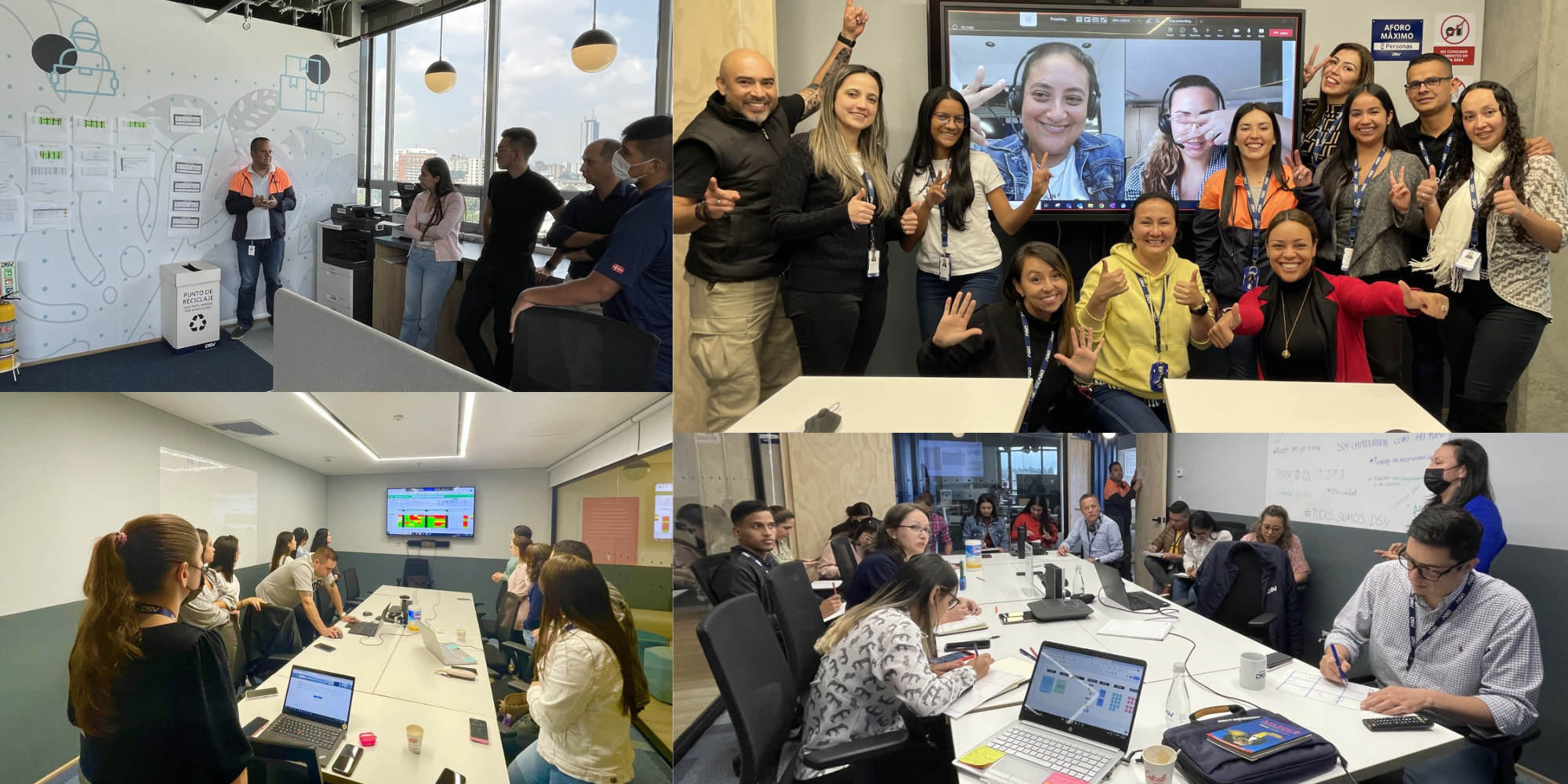

CASE STUDY – This transport and logistics company in Colombia has turned to Lean Thinking to become more adaptive and ensure an easier post-acquisition integration of new cultures.
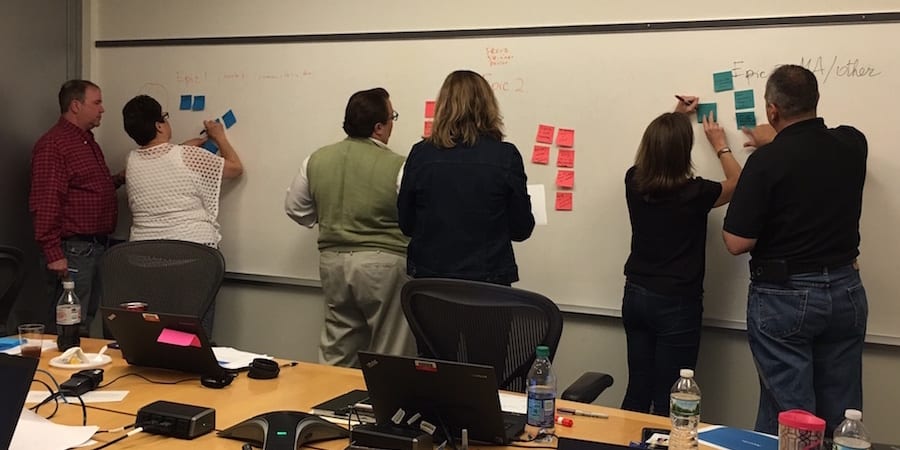


INTERVIEW – Business services company Dun & Bradstreet learned that the best way to tackle organizational challenges is using a combination of agile, lean startup and more traditional lean principles.
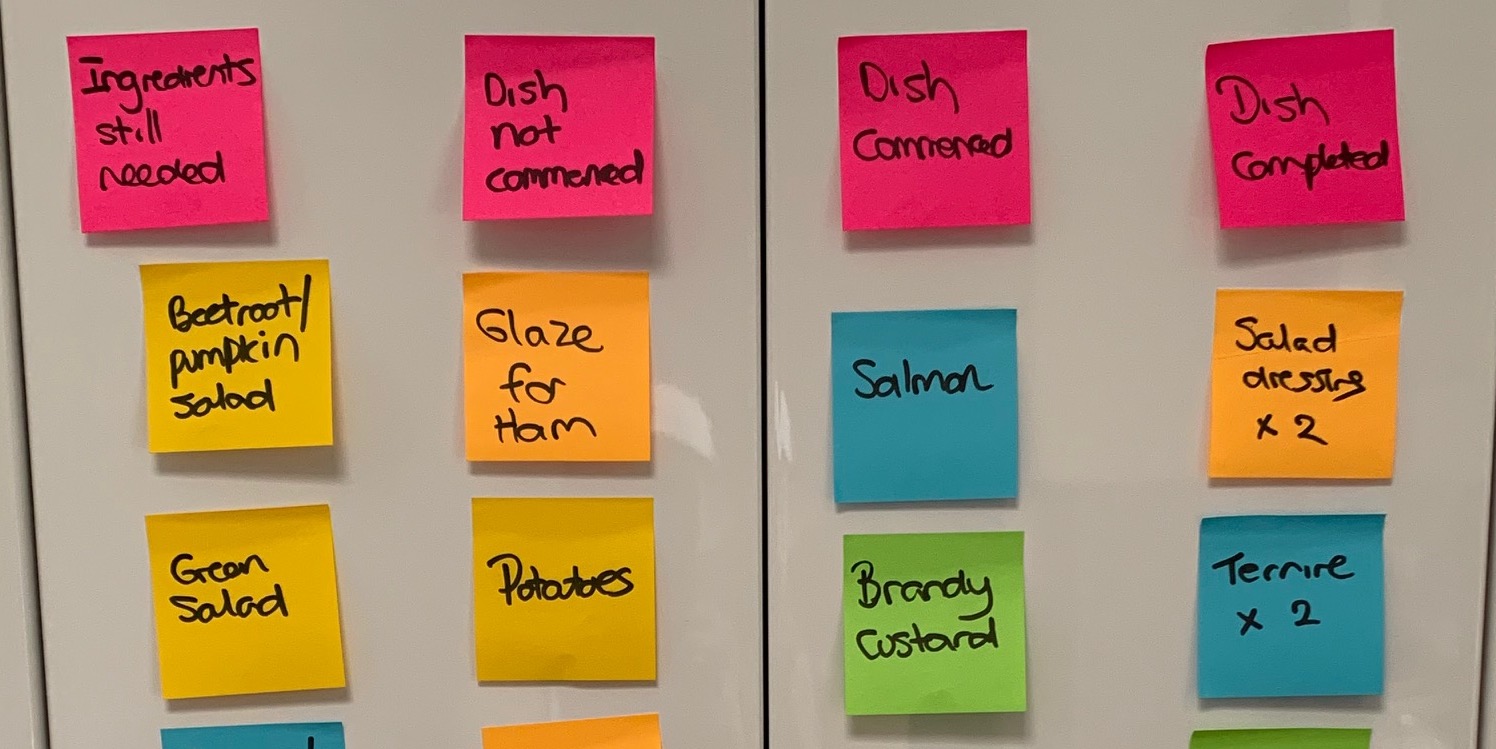

FEATURE – The holidays are a time for reflection. The author shares some her reflections on her experience with lean thinking and the role of leadership in a lean transformation.
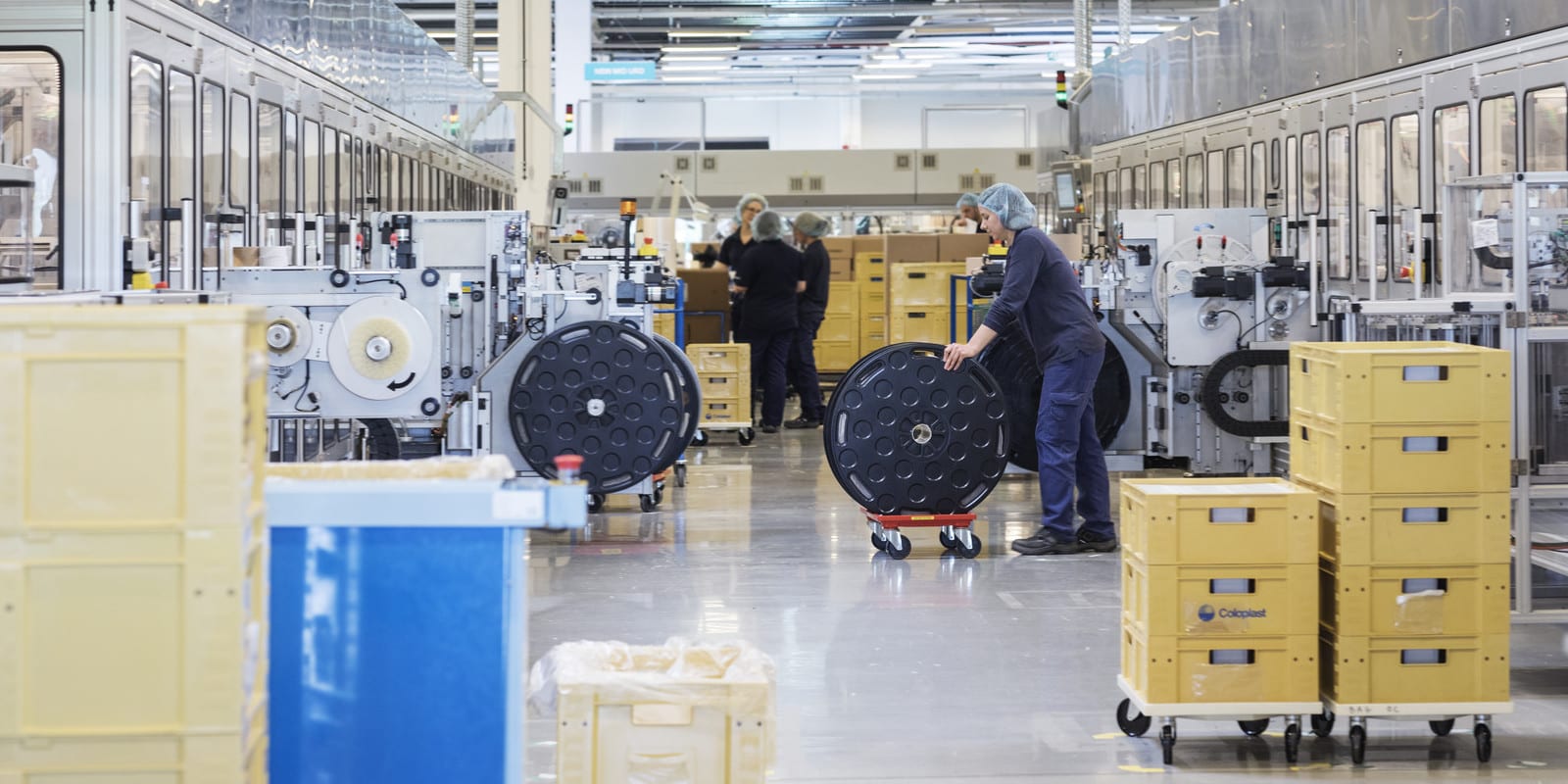

CASE STUDY – The author looks back at the impressive lean transformation of the Hungarian plant of Coloplast, a Danish company offering medical devices and services.

